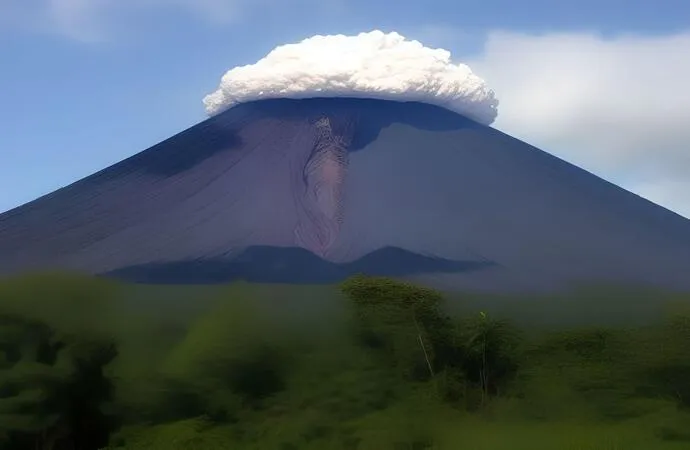The Paricutin Volcano.

The Paricutin Volcano, often known as Paricutin, is a magnificent geological wonder located in Mexico's Michoacán province.
The eruption of this volcano in the 1940s, which astounded both residents and scientists, is one of nature's dramatic and unexpected creations. We shall examine the fascinating origins, development, and ongoing significance of Paricutin Volcano in this essay.
The Paricutin Volcano's Birth:
On February 20, 1943, the small farming community of Paricutin saw the beginning of the Paricutin tale. Farmers Celedonio Gutierrez and Dionisio Pulido were maintaining their cornfield when they observed the ground bursting open suddenly.
They watched in shock as smoking vents and cracks appeared, then ash, rocks, and lava were ejected. The Paricutin Volcano was officially born at this time, and the world's attention was swiftly drawn to it when it erupted.
Development and Eruption:
A well-known example of a cinder cone volcano, which is a tiny and steep-sided form of the volcano, is Paricutin. Paricutin continued to erupt for eight years, steadily eroding its way up from the nearby fields.
During its initial explosive period, the volcano's height climbed on average by around 1 meter (3 feet) per day when lava flows and volcanic ash erupted.
Paricutin had a final height of roughly 424 meters (1,391 feet) when the eruptions stopped in 1952.
Impact of Eruption:
The local populations and the scientific community were both greatly impacted by the Paricutin eruption. Layers of ash and lava covered the community of San Juan Parangaricutiro and another nearby village.
The continuous march of the volcano forced thousands of people from their homes and fields, forever altering their lives.
At Paricutin, researchers had a rare chance to see a volcano's emergence and growth in real time.
Volcanologists from all over the world went to the location, where they collected priceless data on volcanic activity and the emergence of geological characteristics. We have learned a lot about volcanic activity thanks to the information collected from Paricutin.
Legacy & Attraction For Tourists:
The Paricutin Volcano still persists as evidence of the strength and tenacity of nature. A bizarre combination of lush greenery, frozen lava flows, and frightening ruins of the settlements the volcano once destroyed make up the area around it.
Explore the abandoned settlement of San Juan Parangaricutiro, where the church tower still protrudes from the lava and serves as a somber reminder of the community's demise.
People who want to observe this natural wonder up close are increasingly travelling to Paricutin.
Travellers with a sense of adventure can trek to the top of the cinder cone, where they will be rewarded with stunning panoramas of the surroundings and a profound sense of awe at the forces that sculpted this singular terrain.
Conclusion:
The dramatic and unexpected eruption of the Paricutin Volcano in the 1940s had a lasting impact on both the volcanology community and the Michoacán region of Mexico.
Its legacy continues as a geological marvel as well as a representation of how our world is constantly changing. The accident at Paricutin serves as a poignant reminder of the forces that shape our world and the resiliency of the human spirit.
Visitors can embark on an exciting trip into the fiery and erratic splendor of Earth.
For more information on the other seven natural wonders of the world, go here.


